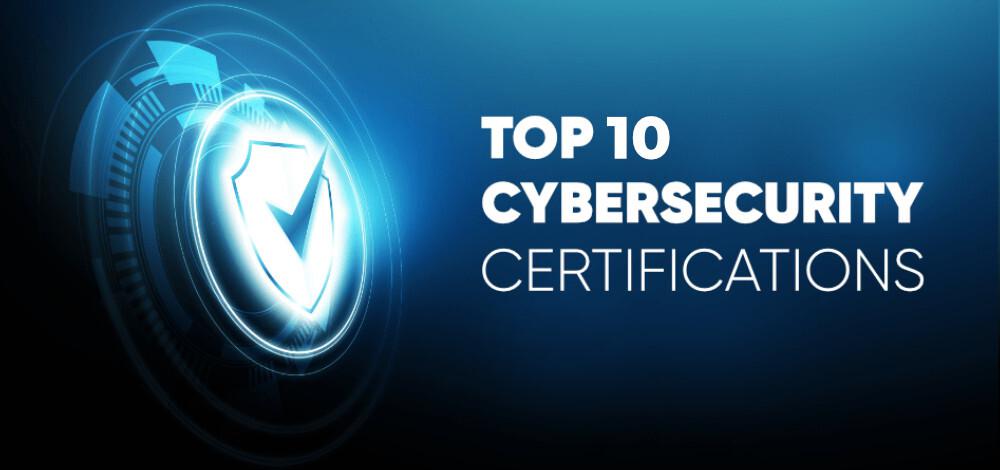What is Cyber security and cyber forensics?
Cybersecurity is the practice of protecting digital systems, networks, and data from unauthorized access and malicious activities. Cyber security and cyber forensics both are intended to protect data, programs, networks, and other digital assets.
Digital forensics, also known as cyber forensics, is the process of collecting, analyzing, and preserving digital evidence from computers, networks, mobile devices, and other digital sources to investigate and prevent cybercrime or other digital incidents.
Let’s study some cyber attacks, Types of cyber attacks, and Cyber Security Tools

What are attacks in Cyber Security?
A cyber attack is a deliberate and malicious attempt to compromise, disrupt, or gain unauthorized access to digital systems, networks, devices, or data. Although, these attacks can take various forms and exploit vulnerabilities in software, hardware, and human behavior.
The motivations behind cyber attacks can vary widely, including financial gain, data theft, political objectives, ideological reasons, or simply causing chaos and disruption.
Types of Cyber Attacks

Some of the most common cyber attacks are:
- Malware:- It refers to a category of software designed with harmful intent to disrupt, damage, steal, or gain unauthorized access to computer systems, networks, and data.
- Particularly, it includes viruses, worms, trojans, and ransomware.
- Phishing:- Phishing is a type of cyber attack in which attackers use deceptive tactics to trick individuals into disclosing sensitive information, such as passwords, credit card numbers, and personal identification. Even though, to perform actions that compromise their security.
- It includes bait creation, deceptive content, fake links, and data collection.
- Man-in-the-middle attack:– A Man-in-the-middle attack is a type of cyberattack where an attacker intercepts or alters communication between two parties who believe they are directly communicating with each other.
- It can occur in public Wi-Fi Networks, DNS Spoofing, and Email Interception.
- Distributed Denial-of-Service (DDoS) attack:- (DDoS) attack is a malicious attempt to disrupt the normal functioning of a targeted website, online service, or network by overwhelming it with a massive volume of traffic.
- Furthermore, It can be use for various reasons such as hacktivism, extortion, etc.
- SQL injection:- It is a type of cyber attack that exploits vulnerabilities in a web application’s input fields to execute malicious SQL (Structured Query Language) statements against a connected database.
- However, it can take different forms like classic, blind, and Error-Based SQL Injection.
- Zero-day exploit:– It is a cyber attack that takes advantage of a software vulnerability that is unknown to the software vendor or developer.
- This attack can have various goals such as Data Theft, Espionage, and Cybercrime.
- Brute Force attack:- This is a type of cyber attack where an attacker systematically tries all possible combinations of passwords or encryption keys.
- It can be perform in different ways such as Dictionary, Rainbow Table Attack, and Credential Stuffing.
TOOLS REQUIRED IN CYBER SECURITY

Here are the top 6 cyber security tools:
1. NMAP– Open-source network scanning tool used for discovering devices, services, and vulnerabilities on a network.
2. Wireshark– It allows users to capture, analyze, and inspect the traffic flowing through a network in real-time or from previously captured data.
3. Metasploit- Widely-used penetration testing framework and exploit development platform that helps security professionals identify vulnerabilities as well as test the effectiveness of security measures within networks and systems.
4. Burpsuite- Widely used web application security testing tool. It is designed to help security professionals, developers, and testers identify vulnerabilities, analyze application behavior, and assess the security posture of web applications.
5. Kali Linux– Specialized Linux distribution designed for penetration testing, ethical hacking, and cybersecurity tasks and researchers to assess and improve the security of systems and networks.
6. Brute Force attack– This is a type of cyberattack where an attacker systematically tries all possible combinations of passwords or encryption keys until the correct one is found.
Career Opportunities in Cyber Security

Cybersecurity is a rapidly growing and evolving field with a wide range of career opportunities. Moreover, as technology becomes more integrated into various aspects of our lives, the need to protect digital assets and information from cyber threats becomes increasingly important.
Here are some of the career opportunities available in cyber security
1. Cyber Security Analysts– Cyber Security analysts monitor networks and systems for security breaches, analyze security data, and respond to incidents. Although, they play a crucial role in identifying vulnerabilities and mitigating risks.
2. Penetration Tester– Penetration testers simulate cyber attacks on systems, networks, and applications to identify vulnerabilities before malicious hackers can exploit them. They help organizations strengthen their security measures.
3. Ethical Hacker– An ethical hacker, often referred to as a “white hat” hacker. By identifying vulnerabilities and weaknesses before malicious hackers can exploit them, ethical hackers help organizations enhance their security measures and protect sensitive data.
4. Cyber Security Engineer– Cyber security engineers design, implement, and maintain security systems and technologies, including firewalls, intrusion detection/prevention systems, and encryption solutions.
5. Cyber Security Consultant– Cyber security consultants provide expert advice to organizations on security strategy, risk assessment, compliance, and best practices as well as they often work with diverse clients to improve their security posture.
6. Cyber Security Architect– Cyber security architects design and create the overall security structure of an organization’s IT systems. They ensure that security measures are integrated into every aspect of technology design and implementation.
7. Cyber Threat Intelligence Analyst– Cyber threat intelligence analysts gather and analyze data to identify emerging threats, understand cybercriminal tactics, and provide actionable insights to proactively defend against attacks.
8. Cyber Security Researcher– Cyber security researchers explore and analyze new vulnerabilities, threats, and attack techniques. Additionally, their findings contribute to the development of new defense mechanisms and best practices.
Certification Courses in Cyber Security

1. Certified Information Systems Security Professional (CISSP)
2. Certified Ethical Hacker (CEH)
3. CompTIA Security+
4. Certified Information Security Manager (CISM)
5. Certified Information Systems Auditor (CISA)
6. Cisco Certified CyberOps Associate
7. Certified Cloud Security Professional (CCSP)
8. Cisco Certified Network Access (CCNA)
9. Offensive Security Certified Professional (OSCP)
10. GIAC Security Essentials (GSEC)
WHAT IS CYBER FORENSICS?

Cyber forensics, also known as digital forensics, is a multidisciplinary field within cybersecurity that focuses on investigating, analyzing, and recovering digital evidence from various electronic devices and digital systems. In addition to this, it involves using specialized techniques, tools, and methodologies to uncover and document evidence related to cybercrimes, security breaches, and other digital incidents.
Key aspects of cyber forensics include:
- Evidence Collection: Cyber forensics experts collect digital evidence from a wide range of sources, including computers, servers, mobile devices, cloud services, networks, and digital media.
- Evidence Preservation: Ensuring the authenticity and integrity of digital evidence is a critical step. Proper techniques are used to prevent tampering or alteration of the collected evidence.
- Analysis and Examination: Digital evidence is thoroughly analyzed to reconstruct events, uncover patterns of activity, and identify potential malicious actions. Techniques range from examining log files to dissecting malware behavior.
- Data Recovery: In cases of data loss, accidental deletion, or deliberate destruction, cyber forensics professionals attempt to recover lost data using specialized methods.
- Chain of Custody: Maintaining a documented chain of custody is essential to track the handling and movement of evidence, ensuring its admissibility in court.
- Malware Analysis: Cyber forensics experts analyze malware to understand its behavior, origin, and impact on systems. This helps in assessing the extent of compromise and developing countermeasures.
- Incident Response: Cyber forensics is an integral part of incident response, assisting organizations in identifying the source and extent of breaches, minimizing damage, and restoring normal operations.
- Litigation Support: Experts often provide expert testimony in legal proceedings to explain technical details to judges and juries, helping them understand the evidence and its significance.
- Criminal Investigations: Cyber forensics professionals collaborate with law enforcement agencies to investigate cybercrimes, gather evidence, and support criminal cases.
- Forensic Tools: A variety of specialized tools and software are used for data extraction, analysis, decryption, and evidence presentation.
TOOLS REQUIRED IN CYBER FORENSICS

Here are the top 5 cyber security tools:
1. Disk Imaging and Data Acquisition
- FTK Imager:- A widely used tool for creating disk images and analyzing digital evidence.
- EnCase:- Provides powerful imaging and evidence-collection capabilities.
- DD (Command-Line Tool):- A command-line tool for creating bitwise copies of drives.
2. Data Analysis and Recovery
- Autopsy:- An open-source digital forensics platform that assists in analyzing digital evidence.
- Scalpel:- Used for carving out specific types of files from disk images.
- PhotoRec:- Specialized for recovering multimedia files from damaged or deleted partitions.
3. Network Traffic Analysis
- Wireshark:- Captures and analyzes network traffic to identify anomalies and potential security breaches.
- NetworkMiner:- Extracts files and information from network captures.
4. File Metadata Analysis
- Exif Tool:- Extracts metadata from various file formats, such as images and documents.
- Bulk Extractor- Extracts information such as email addresses and credit card numbers from large datasets.
5. Mobile Device Analysis
- Cellebrite UFED:- A commercial tool for mobile device forensics and data extraction.
- Oxygen Forensic Detective:- Provides comprehensive mobile device analysis.
Career Opportunities in Cyber Forensics

Cyber Forensics is essential for solving cyber crimes, investigating incidents, and ensuring justice in the digital world.
Here are some of the career opportunities in digital forensics
1. Digital Forensics Analyst– Digital forensics analysts investigate digital devices such as computers, mobile devices, servers, and networks to recover and analyze data related to cybercrime as well as use specialized tools and techniques to identify evidence and present findings.
2. Cybercrime Investigator– These professionals specialize in investigating cybercrimes such as hacking, data breaches, online fraud, and digital identity theft. Particularly, they gather evidence that can be used in legal proceedings.
3. Network Forensics Specialist– Network forensics specialists analyze network traffic to identify unauthorized activities, breaches, and attacks as well as reconstruct network communication patterns and identify potential vulnerabilities.
4. Mobile Forensics Expert– Mobile forensics professionals focus on extracting and analyzing data from mobile devices, including smartphones and tablets. They recover evidence from apps, messages, call logs, and more.
5. Data Recovery Specialist– Data recovery experts use specialized tools and techniques to retrieve data from damaged or corrupted digital devices. Their work is often crucial for investigations and legal cases.
6. Malware Analyst– Malware analysts examine malicious software to understand its behavior, functionality, and impact. Although, they help organizations identify and counteract threats posed by various types of malware.
7. Forensics Consultant– Forensics consultants provide expertise to legal teams, law enforcement agencies, and organizations dealing with cybercrimes.
8. Researcher– Some professionals in cyber forensics engage in research to develop new methodologies, tools, and techniques to stay ahead of evolving cyber threats and challenges.
Certification Courses in Forensics

1. Certified Digital Forensics Examiner (CDFE)
2. Certified Computer Forensics Examiner (CCFE)
3. Certified Computer Examiner (CCE)
4. GIAC Certified Forensic Examiner (GCFE)
5. GIAC Certified Forensic Analyst (GCFA)
6. Certified Mobile Forensics Examiner (CMFE)
7. Certified Cyber Forensics Professional (CCFP)
8. Certified Hacking Forensic Investigator (CHFI)
9. EnCase Certified Examiner (EnCE)
10. Certified Forensics Investigation Professional (CFIP)
CONCLUSION
In conclusion, the fields of cyber security and cyber forensics are most important in today’s digital age. Furthermore, as technology continues to advance, the risks associated with cyber threats and attacks grow exponentially. It is essential to implement robust cybersecurity measures to protect sensitive information, critical infrastructure, and individuals’ privacy.
Moreover, cyber security and cyber forensics both fields emphasize the importance of continuous learning and adaptation as well as cyber threats evolve, professionals in cybersecurity and cyber forensics must stay updated with the latest techniques, tools, and methodologies.
Collaboration between these two disciplines is crucial, as cyber security and cyber forensics measures often intersect with cyber forensics investigations in the aftermath of incidents.
For video reference, visit our YouTube channel
